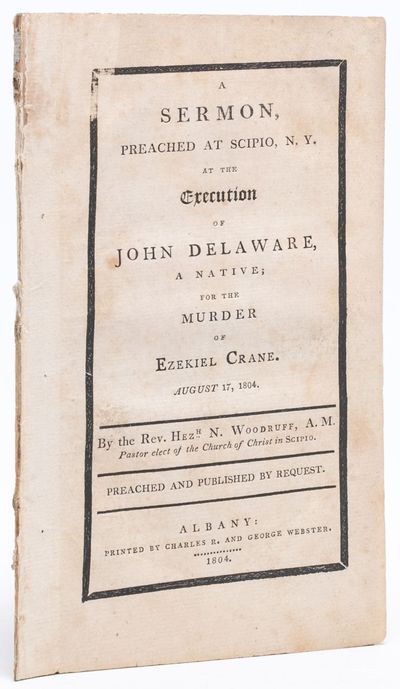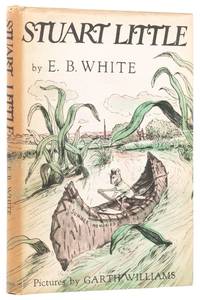first edition
1804 · Albany
by Woodruff, Hezekiah N.
Albany: Charles R. and George Webster, 1804. First edition. Very Good +. Printed paper self wrappers. 122 x 204 mm. 24 pp., complete. Front wrapper partially loose from binding, but still holding. A remarkably fresh copy overall despite some foxing to last couple leaves. A clean and fresh copy, Very Good+
The killing of Ezekiel Crane by John Delaware (sometimes written as Delaware John or John the Delaware) took on a somewhat legendary quality in the mid- to late-nineteenth century, and the accounts of the killing that we could locate are colored with sensationalistic details. The basic facts, shared by most accounts, seem to be that John, (truncated)
The killing of Ezekiel Crane by John Delaware (sometimes written as Delaware John or John the Delaware) took on a somewhat legendary quality in the mid- to late-nineteenth century, and the accounts of the killing that we could locate are colored with sensationalistic details. The basic facts, shared by most accounts, seem to be that John, (truncated)










